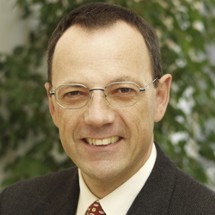|
|||||||||||
Guinness World Record
PAC-Car II holds the current World Record in fuel efficiency!
Watt d'Or
The PAC-Car II Team won "The Watt d'Or 2007" Award for energy efficient mobility, by the Swiss Federal Office of Energy >>!
Energy Globe Award
PAC-Car II won the Energy Globe Award 2005, catergory "youth" >>!
PAC-Car II - The Book
The book about PAC-Car II is available now >>
Shape of PAC-Car II
The shape of PAC-Car II is now available as CAD Data >>
Would you like to learn more about modeling and optimization of advanced vehicle propulsion systems? Click here!
"Si tu veux construire un bateau, ne rassemble pas des hommes pour aller chercher du bois, préparer des outils, répartir les tâches, alléger le travail mais enseigne aux gens la nostalgie de l'infini de la mer."
Antoine de Saint-Exupéry
Why PAC-Car?
The PAC-Car project started at ETH in the year 2002. At that time, our laboratory had an almost twenty years long research record in the area of advanced vehicle propulsion systems. Abating the pollutant emission and improving the fuel economy of passenger cars had been the major themes of that work. Amazing progress had been made in this period: the pollutant emission of passenger cars had been reduced by two orders of magnitude and prototype IC engine and hybrid-electric propulsion systems had been built that showed the potential for a reduction of the fuel consumption by a factor of two. Low-temperature fuel-cell systems were a "hot topic" at that moment and expertise in that area had been built up in our laboratory by cooperating in a fuel cell vehicle and in a fuel-cell-APU project.
Amazingly, these achievements were accompanied by a somewhat melancholic feeling: the ongoing research projects did not represent a really exciting challenge. As it often happens, serendipity struck unexpectedly: Gino Paganelli – at that time a post-doctoral associate in our lab – one day came into my office and told me about the Shell Eco Marathons. His idea was to check with the organizers if they would let us race with a fuel cell system and, if yes, to participate at the next event with a new fuel cell propulsion system built into an existing vehicle built at the Université de Valenciennes.
After the OK from the organizers of the Nogaro event, this idea immediately grew into a serious project – the PAC-Car I adventure had been started. It was clear from the very beginning that a fuel cell driving an ultra efficient vehicle had the potential to achieve a fuel economy that would go beyond all known limits. In the PAC-Car I project this potential was verified by developing a novel fuel-cell-based power train and by driving it using the existing vehicle on proving grounds and in several Eco-Marathons. The second project phase, the design and the realization of a completely new vehicle, was going to be even more exciting and challenging. Such an endeavor called for serious management and more resources. Luckily, Jean-Jacques Santin, affiliated with the Université de Valenciennes, could be convinced to take up the lead of this second part and the Swiss Department of Energy (BfE) and ETH Zurich were generous enough to provide financial support. The results of this second project phase are here.
At the heart of the PAC-Car project were the students who worked for a shorter or longer period on it. All of them did a marvelous job and you will find their names listed in this website. Four students played a special role: Dominik Isler, Pius Kobler, Florian Kolb and Nicolas Weidmann opted for a project-oriented major and organized their graduate curriculum around this project. Few ME students ever learned the fundamentals and the intricacies of mechanical structures, control systems, composite materials and fluid dynamics in a more motivating environment. Many other people were instrumental to this project as well: the colleagues at ETH in the fluid dynamics and composite materials laboratories, the people at RUAG Aerospace with their expertise in vehicle aerodynamics, the teams of Tribecraft and Esoro and all other people who contributed in some way.
PAC-Car I and II have probed the actual fuel economy limits of road vehicles. They are an excellent breadboard to integrate and test the latest developments in materials, aerodynamics, structures and systems, and many other disciplines into one system. I am convinced that some of the ideas that have been generated in this project will eventually show up on the road and, following our main mission, contribute to saving fuel and reducing harmful pollutants of passenger cars.
Having said all that, I think that the most important reason why the team was captivated by this project from the very first moment is simply that we had a lot of fun working on it. Accordingly, I want to express in the name of all team members our gratitude to all sponsors that made this adventure possible. My personal big "thank you" goes to all PAC-Car I and II team members. Without their enthusiasm, endurance, and creativity this adventure would not have been possible.
Lino Guzzella

Prof. Dr. Lino Guzzella
Institute for Dynamic Systems and Control (Institut für Dynamische Systeme und Regelungstechnik, IDSC)
Swiss Federal Institute of Technology Zurich (Eidgenössische Technische Hochschule Zürich, ETH Zurich)
Wichtiger Hinweis:
Diese Website wird in älteren Versionen von Netscape ohne
graphische Elemente dargestellt. Die Funktionalität der
Website ist aber trotzdem gewährleistet. Wenn Sie diese
Website regelmässig benutzen, empfehlen wir Ihnen, auf
Ihrem Computer einen aktuellen Browser zu installieren. Weitere
Informationen finden Sie auf
folgender
Seite.
Important Note:
The content in this site is accessible to any browser or
Internet device, however, some graphics will display correctly
only in the newer versions of Netscape. To get the most out of
our site we suggest you upgrade to a newer browser.
More
information

